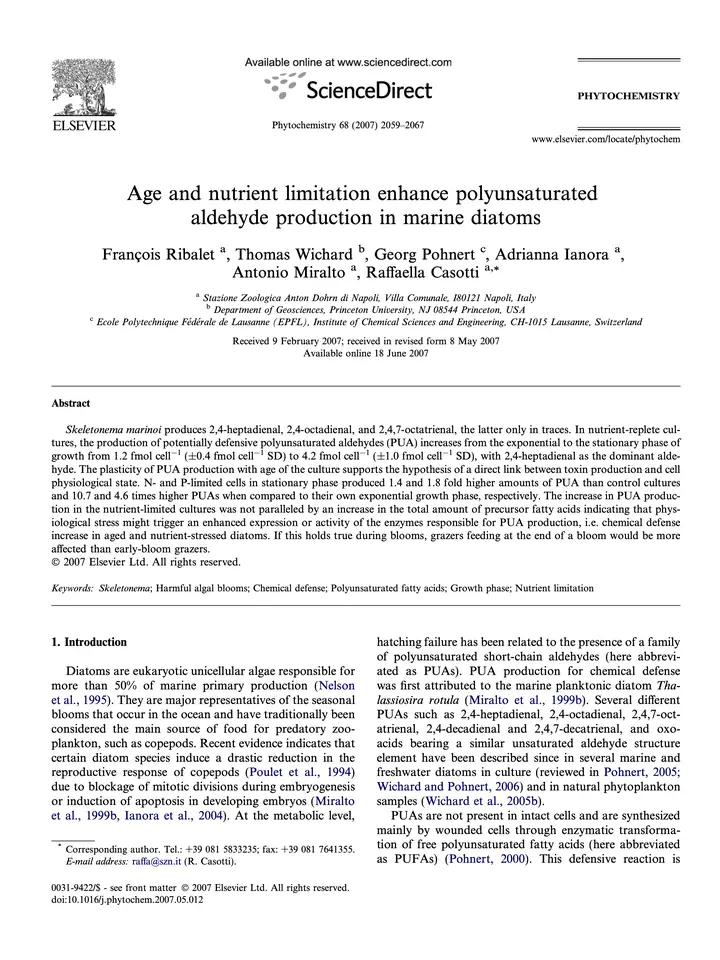
Abstract
Skeletonema marinoi produces 2,4-heptadienal, 2,4-octadienal, and 2,4,7-octatrienal, the latter only in traces. In nutrient-replete cultures, the production of potentially defensive polyunsaturated aldehydes (PUA) increases from the exponential to the stationary phase of growth from 1.2 fmol cell-1(±0.4 fmol cell-1SD) to 4.2 fmol cell-1(±1.0 fmol cell-1SD), with 2,4-heptadienal as the dominant aldehyde. The plasticity of PUA production with age of the culture supports the hypothesis of a direct link between toxin production and cell physiological state. N- and P-limited cells in stationary phase produced 1.4 and 1.8 fold higher amounts of PUA than control cultures and 10.7 and 4.6 times higher PUAs when compared to their own exponential growth phase, respectively. The increase in PUA production in the nutrient-limited cultures was not paralleled by an increase in the total amount of precursor fatty acids indicating that physiological stress might trigger an enhanced expression or activity of the enzymes responsible for PUA production, i.e. chemical defense increase in aged and nutrient-stressed diatoms. If this holds true during blooms, grazers feeding at the end of a bloom would be more affected than early-bloom grazers.